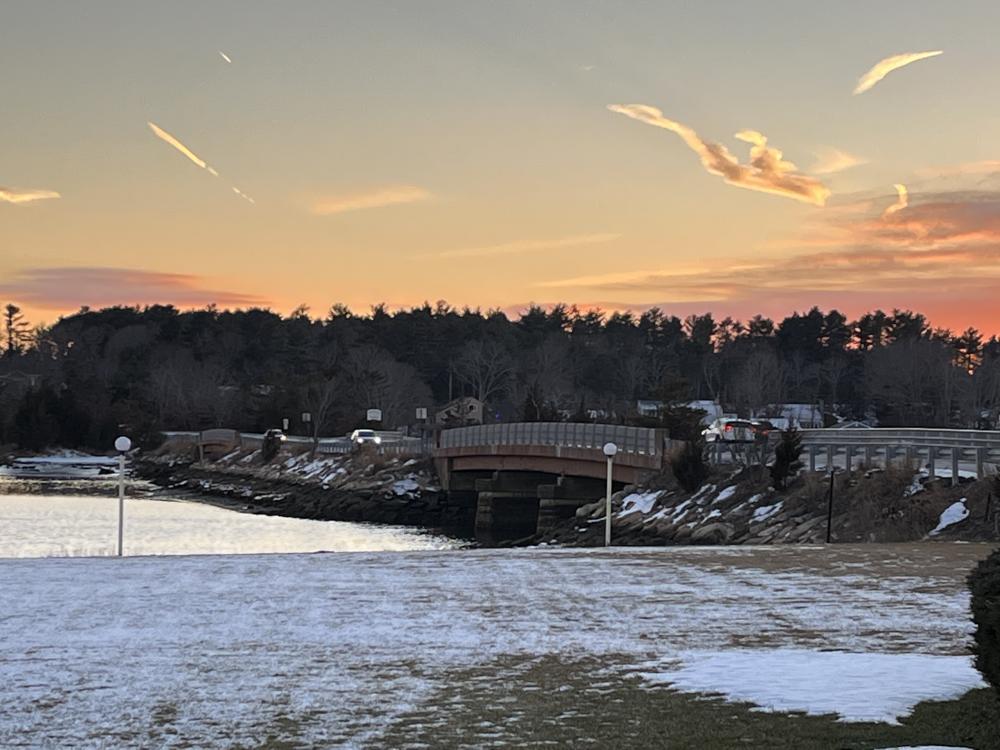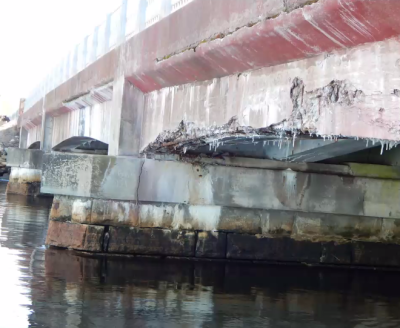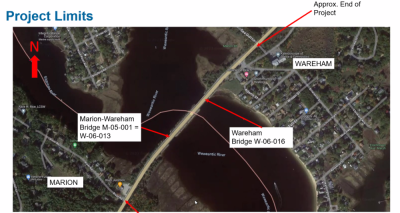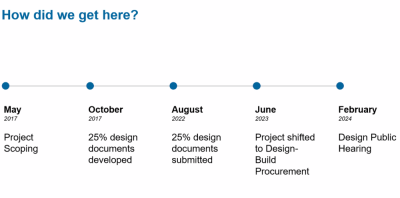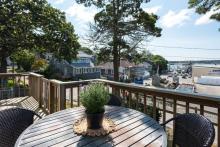MassDOT bridges the information gap on Marion-Wareham project
MARION — Resident concerns pertaining to the causeway, tidal flushing and traffic at the Marion-Wareham Bridge were addressed by the Massachusetts Department of Transportation officials who are in charge of the Weweantic River bridge’s replacement at a public hearing held Wednesday, Feb. 28.
The bridge, which was built in 1926 and widened in 1957, has experienced decades of wear and tear, leaving it “structurally deficient, functionally obsolete, and critical,” according to the department’s project description.
The replacement of these bridges has been on the minds of community members since 2018 when the state’s plan was initially presented at a Marion Select Board meeting.
Funding from the federal Bipartisan Infrastructure Law and the state revived the effort in 2022 and the first phase of the design was submitted for review. The project is estimated to cost approximately $45 million.
Though originally slated to begin in fall 2023, the project remains in the design phase and will be until the design-build is put up for bid in December.
Last year, community members wanted the bridges’ causeway, or center island, to be removed to increase water flow and allow more boats underneath — and they still do.
While MassDOT works to restore the bridge, concerns over the causeway have been taken into consideration, according to Project Manager Bryan Cordeiro.
Cordeiro said the bridge will be lifted by approximately one or two feet to accommodate sea level rise and boaters will still be able to go under the bridge during the construction.
However, the department is limited in how much space can be added due to the abutters, causeway and height restraints.
“The causeway itself sort of provides a role in preventing further storm damage to occur in locations upstream,” he said.
Sara Kreisel, ecological manager for the project, said tidal flushing has been identified as “adequate” at both bridges through studies conducted in recent years.
She added the drainage will be an exact replacement of existing facilities.
Once construction starts, the project is estimated to take approximately three years to complete.
Other attendees of the night’s hearing had questions and concerns about the impact of this project on the environment and wildlife, including the endangered turtles commonly spotted in the area.
According to MassDOT officials, the studies used and conducted by his team have shown that the project would not have any significant impact on the water nor wildlife.
Cordeiro explained the construction crew will be installing permanent measures to impede turtle access. The project requires a variety of environmental permits, which aim to keep the area protected despite the construction, such as the Clean Water Act 401 regulations.
Additionally, the team is required to develop a spill prevention plan and will be using “cofferdams” to prevent sediment and soil from entering the water during construction.
There is still time to share questions, comments and concerns with the bridge’s project team.
Project inquiries, written statements and other exhibits regarding the proposed undertaking may be submitted to Carrie E. Lavallee, chief engineer, via email to massdotmajorprojects@dot.state.ma.us or via U.S. Mail to Suite 7210, 10 Park Plaza, Boston, MA 02116, Attention: Major Projects, Project File No. 605311. Statements and exhibits intended for inclusion in the hearing transcript must be emailed or postmarked no later than ten (10) business days after the hearing is hosted.



